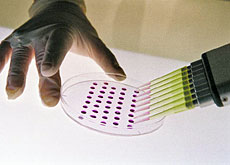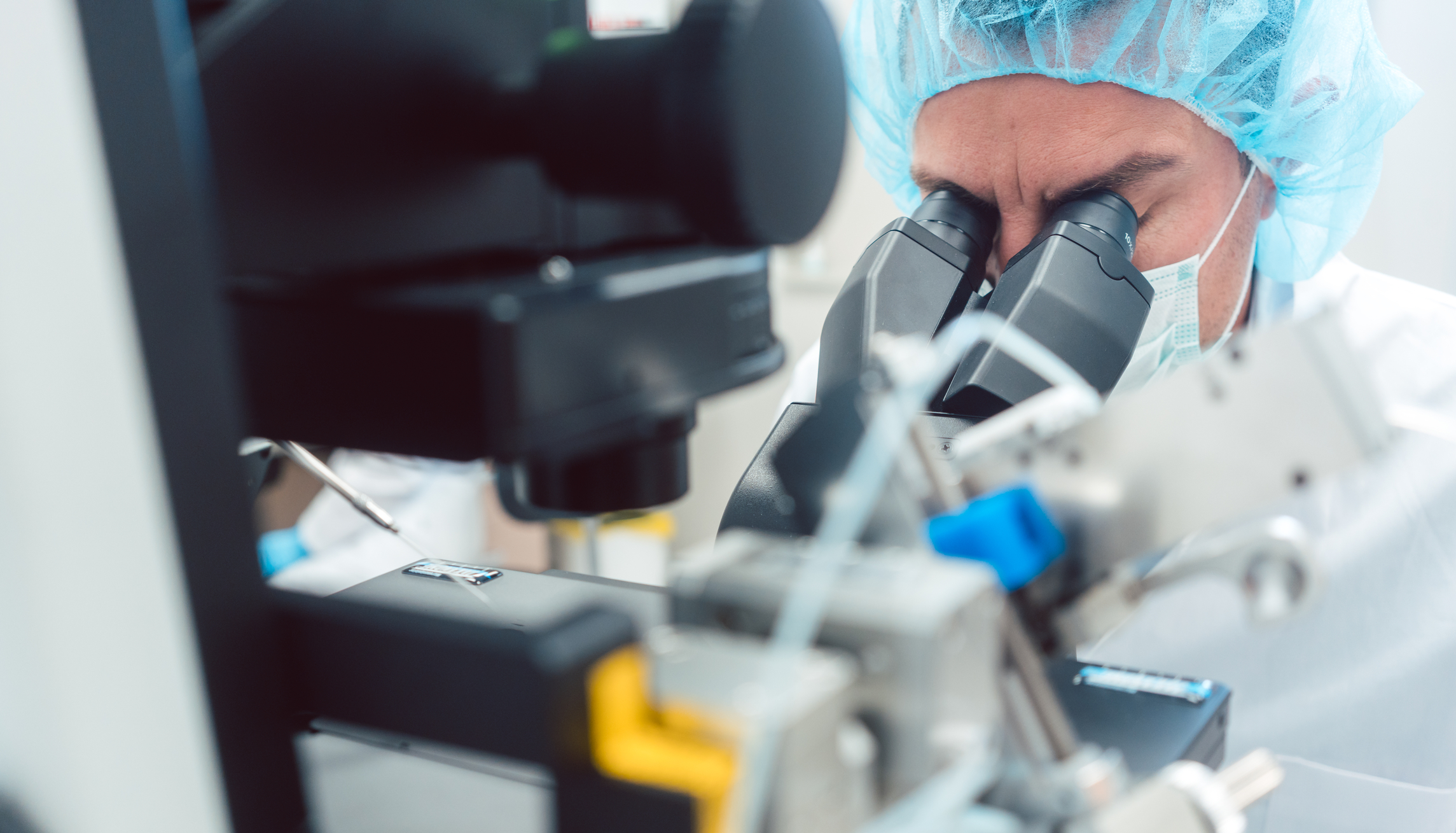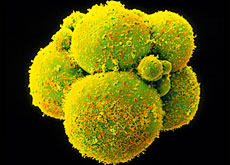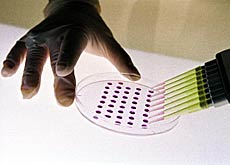Stem cells show some heart

Scientists at Zurich University have for the first time grown human heart valves using stem cells from the amniotic fluid that cushions babies in the womb.
This revolutionary approach could be used to repair defective hearts and could overcome the ethical dilemmas connected to stem cell use.
The news follows recent successes at growing bladders and blood vessels and suggests that people may one day be able to grow their own replacement heart parts – in some cases before they are even born.
The idea behind the Zurich experiment is to create the new valves in the lab while the pregnancy progresses and have them ready to implant in a baby after birth.
“If you have to wait for the baby to arrive to collect cells, it takes another six to eight weeks before a valve is ready to implant, which is often too late,” Dr Simon Hoerstrup, the university’s head of cardiovascular surgery research, told swissinfo.
It is one of several tissue-engineering advances that could lead to individualised infant and adult heart valves which are more durable and effective than artificial or cadaver valves.
Hoerstrup says amniotic stem cells have proven to be the easiest to collect in sufficient numbers to grow a heart valve.
The cells are attached to biodegradable scaffolding with the shape of a valve and left to develop in an environment that mimics body conditions.
Potential
Hoerstrup, who presented the research this week at an American Heart Association conference in Chicago, said that besides heart valves, this stem cell therapy might be used to repair blood vessels or patch up holes in the heart’s ventricular wall.
One per cent of all newborns – more than a million babies born worldwide each year – have heart problems.
Valve defects can be detected with ultrasound tests at about 20 weeks of pregnancy. While doctors prefer to repair defective valves, there are many cases were replacement is the only solution, said Hoerstrup.
Conventional procedures to fix faulty valves also have drawbacks. Artificial valves are prone to blood clots and patients must take anti-clotting drugs for life, while valves from human cadavers or animals can deteriorate, requiring more surgery to replace them.
That is especially true in children, because these valves don’t grow along with the body.
Ethics
The Swiss procedure has another advantage. Using cells the foetus sheds in amniotic fluid avoids controversy because it doesn’t involve destroying embryos to get stem cells.
“This is the ethical advantage of our approach,” Hoerstrup said. “We use adult stem cells that belong to the baby. You take cells from the amniotic fluid without harming the unborn child and there is no sacrifice of an embryo.”
Hoerstrup said amniotic stem cells also can be frozen for years and potentially could be used to create replacement parts for aging or diseased valves in adults, too.
“I would not necessarily recommend storing samples systematically, but I would suggest that women who have undergone genetic testing have anything remaining from the samples frozen,” he said.
The research is still preliminary, and experts say implanting tissue-engineered valves in human hearts is likely to be years away.
swissinfo, Scott Capper with agencies
In 2004 two-thirds of Swiss voters approved a new law allowing research on stem cells from surplus human embryos.
The production of stem cells was limited to embryos no older than seven days.
Therapeutic cloning and the trade in embryos remain outlawed, as does research on the embryos themselves.
For research to go ahead permission has to be granted by the Federal Health Office and the ethics commission.
Stem cells are unspecialised cells, which can develop into any part of the human body.
Because of this potential, researchers believe it will be possible one day to use them to fight degenerative diseases, such as Alzheimer’s or Parkinson’s.
Stem cells are present mainly in the early stages of life, when the cells of a fertilised egg begin to multiply before developing into a human baby.
Stem cells are also found in the umbilical cord, amniotic fluid and in the adult organism, but their potential is more limited than that of embryonic stem cells.

In compliance with the JTI standards
More: SWI swissinfo.ch certified by the Journalism Trust Initiative











You can find an overview of ongoing debates with our journalists here . Please join us!
If you want to start a conversation about a topic raised in this article or want to report factual errors, email us at english@swissinfo.ch.